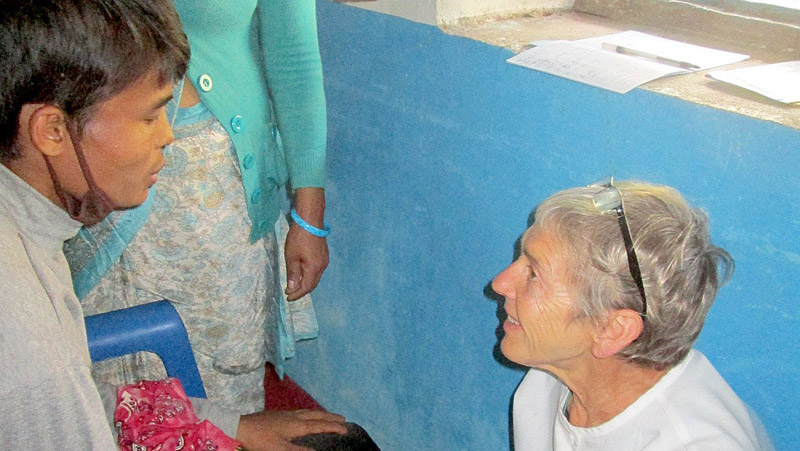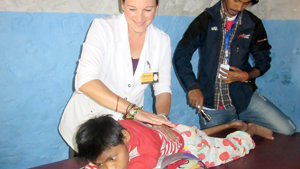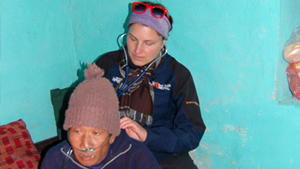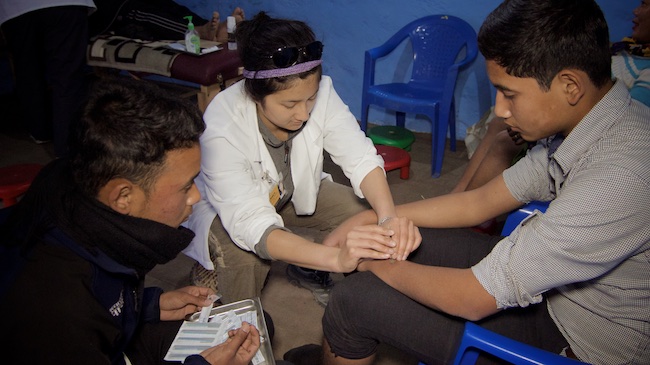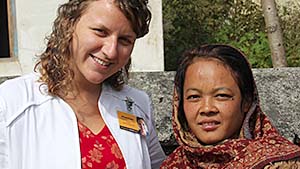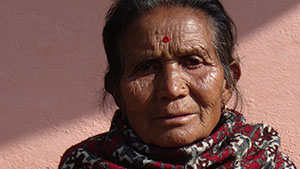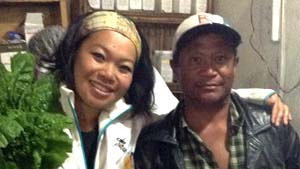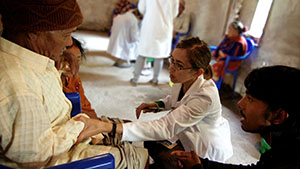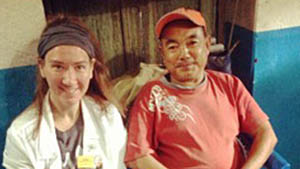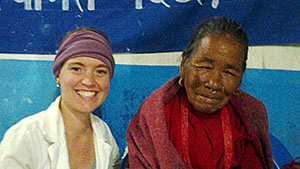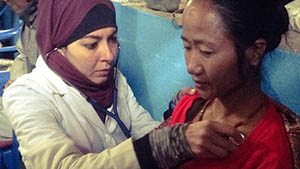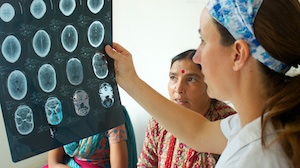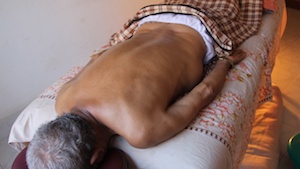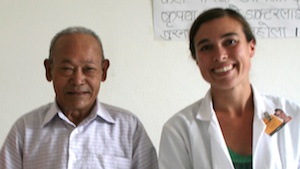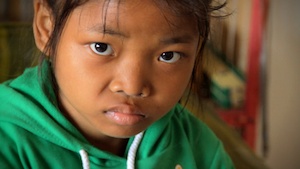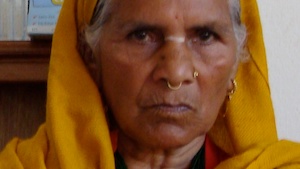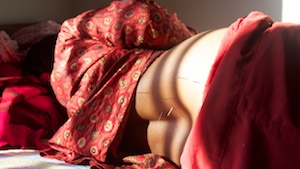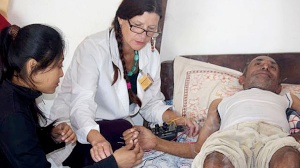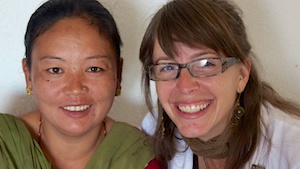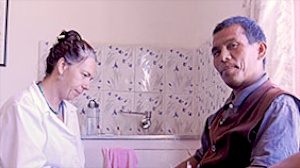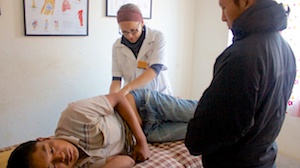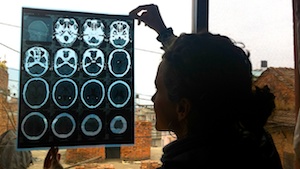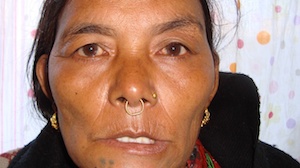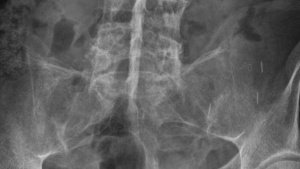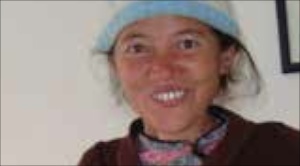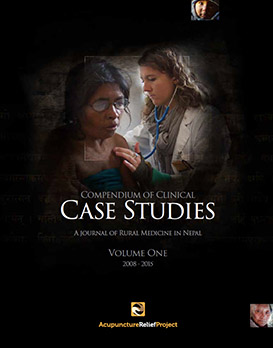Jason Gauruder LAc
December 2014
OVERVIEW

40-year-old male presents with chronic, burning gastrointestinal pain with accompanied acid reflux, belching, fullness, diarrhea, weight loss and occasional rectal bleeding. The patient also experiences fatigue and insomnia. Receiving only acupuncture and Chinese medicine therapy for this condition, the patient has shown an almost complete remission of symptoms after 8 treatments.
Subjective
Patient is a 40-year-old male presenting with gastrointestinal pain and diarrhea with initial onset 2-3 years prior to his initial consultation at this clinic. Patient reports pain is worse after eating and feels like a burning sensation in the epigastrium, with concurrent pain in the lower left and right quadrants of the abdomen. Spicy and oily foods exacerbate the problem and are generally avoided by the patient. Bowel movements are frequent with burning pain and diarrhea. The stools are yellow, loose and have a history of occult blood. Other gastric complaints include acid reflux that improves with belching, bloating and foul flatulence.
The patient experiences fatigue during the day and insomnia at night that manifests as difficulty falling asleep. Urination is frequent, yellow in color, but without discomfort.
The patient has not been able to seek medical attention for this condition before, nor taken any medications.
Objective
The patient’s appearance is thin, with visible ribs and gaunt face. Speech is soft, but he’s mentally alert. The sclera of his eyes are red, with a slight jaundice.
Upon palpation of the abdomen, exquisite rebound tenderness is felt halfway between the xiphisternal junction and the navel, as well as at bilateral points in the right and left lower quadrants, slightly lateral to mid-line between the navel and pubis (ST27 & KI14).
Tongue is red, with thick coat that is densest at the root and yellow in color.
Pulses are large, expanding and rapid with particular excess in the guan positions.
Assessment
DX: Chronic gastritis with inflammatory bowel syndrome, potentially Crohn’s disease
TCM DX: Damp-heat in the lower jiao; ST yin deficiency with fire
The level of transmural inflammation throughout the digestive tract gives high potential to chronic inflammatory bowel syndrome, which includes Crohn’s disease and ulcerative colitis, characterized by chronic inflammation at various sites in the GI tract, resulting in diarrhea and abdominal pain. Tenderness upon palpation reveals inflammation focused around the ileum and colon, which is present in 45% of Crohn’s patients. Lack of chronic bloody stools differentiates from ulcerative colitis. The relapsing and remitting of symptoms over the course of 2 years is also a likely marker of Crohn’s disease.
Prognosis
Regular acupuncture and herbal medicine treatment to mediate the more serious symptoms of the disease, and allow for remission. The patient already avoids foods that exacerbate the condition. Follow-up treatment will be required to manage symptoms, considering the reoccurring nature of inflammatory bowel conditions.
If there is little to no response to therapy within 8 treatments, a colonoscopy or ultrasound would be indicated to rule out further obstruction or ulceration of the Large Intestine. A stool sample would also be ordered to check for inflammatory markers and/or if parasitic infection is responsible for the inflammation.
Plan
Treat with acupuncture 2 times per week with daily Chinese herbal medicine intake. Upon the eighth treatment, the patient will be reevaluated.
Treatment principle: Drain damp-heat, clear Stomach and Large Intestine fire, nourish yin and unblock stagnant flow of qi & blood in Yangming channels.
Typical treatment: LI11, LI4, LI2, CV12, CV10, ST25, SP15, ST36, ST44, LV2, KI10
Alternative points: PC6, KI14, ST40, LV8, DU20, Ling Gu
Herbal Formulas: Formulas are based on presentation of pulse at each treatment, and are adjusted according to symptoms and herbal availability.
Huang Lian Su: 8 pills TID for first week to clear inflammatory heat of Stomach
Shu Gan Wan: In conjunction with Ma Zi Ren Wan, 2 pills TID to clear Stomach heat and course the Liver to prevent overacting on Stomach and insulting Large Intestine qi flow
Ma Zi Ren Wan: 2 pills TID to drain damp-heat from Large Intestine and moisten dryness from yin deficiency
Zhi Bai Di Huang Wan: At treatment 7, in conjunction with Tao Ren Cheng Qi Tang, 2 pills BID to clear deficiency heat and tonify yin
Tao Ren Cheng Qi Tang: 2 pills BID to unblock bowels, stop bleeding, clear damp-heat
Outcome
After 8 treatments, the patient reported a complete resolution in burning pain and majority of problematic GI signs and symptoms. After 2 treatments, the burning pain in the epigastrium had decreased and sleep improved. At this time, due to an increasingly wiry pulse, the formula was changed from Huang Lian Su to Shu Gan Wan to address Liver overacting while concurrently clearing Stomach heat. After 4 treatments, the pain and symptoms in the epigastric area had almost resolved, while the burning pain in the lower abdomen remained with burning diarrhea and painful bowel movements. The chief complaint being diarrhea, the formula Ma Zi Ren Wan was added in concurrence with Shu Gan Wan. After 6 treatments, blood was noted after bowel movements, with moderate pain during movement. Slight anal prolapse was noted giving suspicion of hemorrhoids. The patient reported a descending nature of the pain from the whole abdomen to below the navel. The decrease in overall GI complaints and an unrooted pulse allowed for the formula Zhi Bai Di Huang Wan to be used in place of Shu Gan Wan to tonify yin while clearing empty heat. Tao Ren Cheng Qi Wan replaced Ma Zi Ren Wan to address the signs of bleeding. After 8 treatments, the bleeding had ceased, lower abdominal pain had been resolved, stools no longer had undigested food and were, overall, soft and formed. Palpation of the abdomen was negative for tenderness. The chief complaint became pain from hemorrhoids.
Future Plan
The nature of inflammatory bowel disease to flare-up requires the patient to comply with follow-up treatment when a relapse period occurs. Since the condition is primarily inflammatory, it is still classified as pattern 1 according to the Montreal classification of Crohn’s disease. If constant relapse patterns occur, it is possible the disease will advance to pattern 2 or 3, requiring more substantial treatment. Pattern 2 involves primarily stenotic or obstruction, and pattern 3 is primarily penetrating or fistulizing, both requiring different therapeutic approaches and possible surgical intervention.
Outcome
The patient responded well to the treatment plan. Considering the limited resources available to the patient, using acupuncture and herbs alone were effective in remitting a pattern of chronic inflammation that has been ongoing for 2 years without any form of intervention. With continued support and treatment, if relapse occurs, it is likely the patient will be able to live a comfortable life with a lower chance of complications from chronic Crohn’s flare-ups. Acupuncture and herbal medicine alone have proven greatly effective for signs and symptoms of GI inflammation, and should be considered as a first line treatment for pattern 1 classifications of Crohn’s disease. In conjunction with allopathic care, it could be hypothesized that Chinese medicine would also be effective complementary care for pattern 2 and 3. Due to the limitations of the accessible health care services available to the patient in Nepal, it is difficult to obtain objective GI imaging that is generally necessary for diagnosis of the progression and severity of Crohn’s disease. If such measures were more readily available, it would better define the improvement of interior structures in the absence of allopathic treatments.












